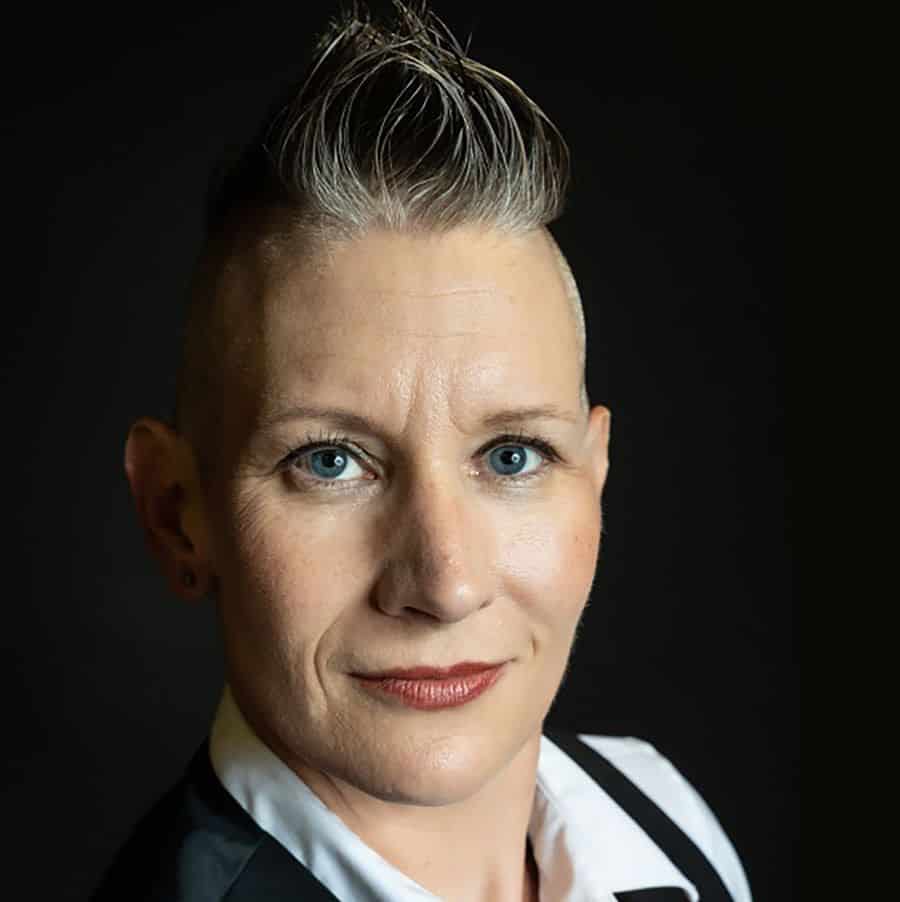How we dress impacts how we perform. A non-binary attorney seeks guidance on what to wear in the courtroom so there’s no negative bias against clients.

Table of contents
I’m non-binary, which means I’m not a man or a woman. You may not realize how much of everyday life is focused on, or divided by, the idea that there are only two genders. Think of bathrooms, garments, watches, hairstyles, hygiene products and so on.
This makes my life complicated.
My professional wardrobe comes from the men’s, women’s and boy’s departments. When I meet with clients, I’m equally likely to wear a shirt and tie (with a chest binder) or a dress and heels. (When I don’t have meetings, I usually wear a plain men’s T-shirt and men’s or women’s jeans.) So far, the other lawyers at the firm and my clients don’t care about my gender or what I wear.
But what do I wear to court?
When I go to court (which isn’t often, thank goodness), I’d like to wear whatever professional attire I want that day, whether it’s a skirt or pants, a feminine blouse or a shirt and tie, including mixing and matching. But I wonder how this might affect my ability to effectively represent my client.
It’s Not About Me
On one hand, when I go to court, it’s not about me. My job is to get the best outcome for my client, and while justice is blind, people aren’t. I don’t want a judge or jury to be negatively biased against my client because of what I’m wearing.
Searching for guidance, I attended a CLE program about what attire to wear to court. The presenter suggested that all lawyers should dress conservatively, with specific guidance for men and women regarding color, fabrics, patterns, even what type of frames our glasses should have. When I asked what tips she had for non-binary lawyers, she didn’t have any. She had no experience with non-binary lawyers to draw from.
I solicited anonymous advice from the Reddit Lawyers community, and many people agreed that “unfortunately” we have to be conservative if we want the judge or jury to focus on our arguments, not our appearance.
One lawyer suggested that I had to dress according to one gender standard for the whole trial. Doing otherwise — wearing a tie and trousers one day and a dress the next — would be distracting. (While I appreciated the Reddit community’s candor, I took their suggestions with a grain of salt as one lawyer didn’t know what “non-binary” meant and another said wearing a three-piece suit would be too outrageous in some jurisdictions.)
Dressing My Best to Be My Best
On the other hand, how we dress impacts how we perform (and no matter what anyone says, court is theater). When you dress well, you feel more confident and present yourself thusly. Every client wants a lawyer who can command the courtroom with their appearance and their message.
I was pleased to receive feedback from a lawyer who encouraged me to be true to myself because it would put me in the best mindset to deliver a strong performance for my client. I refuse to wear anything that will make me so uncomfortable that it distracts me from the job of representing my client. I’ve tried it before in other settings, and it doesn’t work.
Many lawyers suggested I “split the difference” – wear a masculine pantsuit, but no tie. This might be the least distracting option.
From the Branding Expert
I reached out to branding expert Katy Goshtasbi, CEO and founder of Puris Consulting. Here is her advice for non-binary people trying to navigate a binary world, and more specifically, the conservative binary legal world:
As a change and branding expert, the biggest piece of advice I give all my clients is to be themselves and “own” it. What this means for you, regardless of whether you are heterosexual, homosexual or non-binary, is to: a) be proud of who you are, b) define what that means for you personally (clearly and succinctly know your preferences, yet stay open to variations and other options that may suit your needs as well); c) be willing, and gracious enough, to explain it to others who don’t understand it necessarily — this means being patient and respectful to other, perhaps ignorant perspectives, by clearly articulating your preferences without getting defensive or irritated.
We all know, that as humans, we are entitled to equal treatment; however as humans, change is hard for us to master. Understanding any other perspective is hard to master, as well. So, you need to be willing and courageous enough to be the role model and kind example for us all to follow in learning about distinctions and variations of humanity — teaching us all to respect this diversity and also to embrace it for the highest good.
Great. Now I get to be a non-binary role model and simultaneously represent my client. (Sarcastic moment over.)
This may be naive, but I hope that I can wear any professional attire to court and that if I don’t make a big deal out of it, no one else will.
Practically Speaking …
Ultimately, what I wear the next time I go to court may come down to logistics. For safety reasons, manufacturers don’t recommend that you wear a chest binder for more than eight hours. I tend to overheat if I wear one for more than four. So I may only be able to wear a shirt and tie for shorter hearings. On the flip side, if I choose to dress in a more feminine style, I can get away with wearing a suit with a sleeveless blouse, which may be more comfortable in the summer months.
















